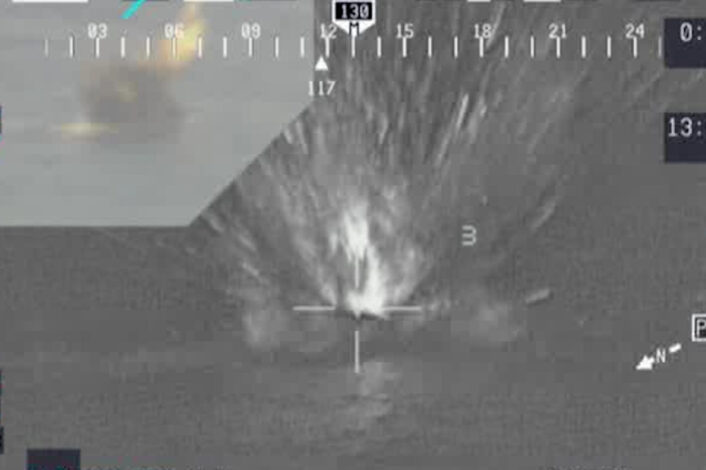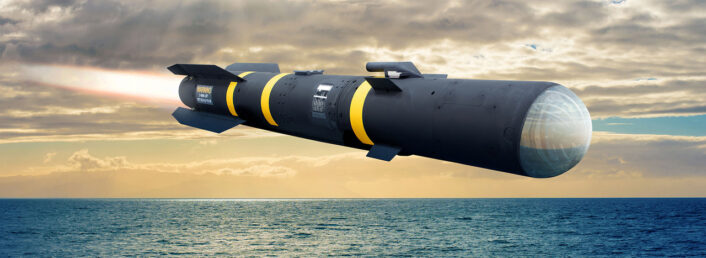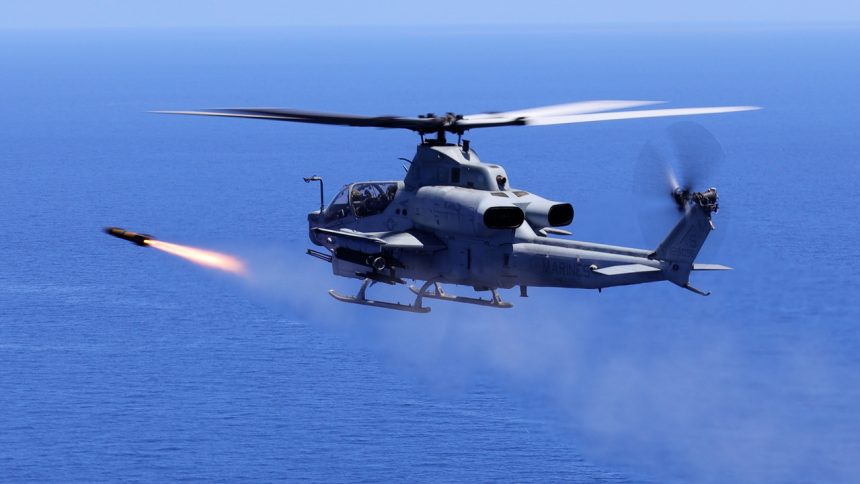The JAGM is basically a new dual-mode guidance section fitted onto a Hellfire missile bus. It was fired for the first time by 31st MEU AH-1Z in Philippine Sea.
In another live-fire exercise amid escalating tensions with China, USMC (U.S. Marine Corps) AH-1Z Viper attack helicopters from the 31 MEU (31st Marine Expeditionary Unit) sank a moving training target vessel in the Philippine Sea on Jun. 26, 2024.
Marine pilots employed a AGM-179 JAGM (Joint Air-to-Ground Missile) to strike a “moving training vessel” during the expeditionary strike exercise. Marines also called it the “first” JAGM being fired from an AH-1Z Viper in the Indo-Pacific region.
The drills come after the ones held between Jun. 15 and 21, that saw four USMC F-35B Lightning IIs from the Marine Fighter Attack Squadron (VMFA) 214 dropping GBU-32 JDAM (Joint Direct Attack Munition) bombs on floating targets off the coast of western Luzon. Philippine Navy, Air Force drones, an American C-130 were employed in the drills.

The Drill
Based in Japan’s Okinawa prefecture, the 31 MEU’s latest drill in the Philippine Sea, that covers Taiwan’s eastern maritime flank is telling, given that China has been assessed to enforce a blockade on all sides of the island. The tactical significance of the drill will be explained subsequently.
The statement said that the AH-1Z Viper, attached to Marine Medium Tiltrotor Squadron (VMM) 262 Reinforced, fired a “live AGM-179 JAGM striking a towed moving training vessel during a training mission at sea.” The JAGM is a precision-guided munition for use against high value stationary, moving, and relocatable land and maritime targets.
The missile can be used to defend key maritime terrain against a wide-range of targets from armored vehicles to maritime patrol craft during conflict. “The success of this expeditionary strike demonstrates the 31st MEU’s capability to deliver precision strikes at sea and safeguard a free and open Indo-Pacific.” “As the nation’s premier crisis response force, the 31st Marine Expeditionary Unit provides a credible and sustainable force capable of executing a wide range of operational and humanitarian operations.”

The JAGM provides a true “fire and forget capability to guide the missile to endgame, able to destroy fast-moving maritime targets like fast attack craft (FAC) in rough sea states” a USMC statement says.
AGM-179 JAGM
Introduced for broadly the same tactical purposes like the AGM-114 Hellfire, it retains significant commonality with the latter and produced by the same team that developed the Hellfire. While the developer Lockheed Martin is also working on an MR (Medium-Range) variant, the basic AGM-179 JAGM began being fielded onto the US Army’s AH-64E Apaches and the Marines’ AH-1Z Viper attack helicopters.
Lockheed declared on Aug. 30, 2022 that the JAGM entered FRP (Full-Rate Production) after approval by the US Army. The JAGM is basically a new “dual-mode” guidance section fitted onto a Hellfire “bus,” which brochures and illustrations from Lockheed show is the propulsion system and warhead. While the Hellfire has a SAL (Semi-Active Laser), the JAGM also possesses a MMR (Millimeter Wave Radar), besides the SAL. It can reach ranges between 0.5 to 8 km.

“The dual-mode sensor combines improved SAL and MMW radar sensors providing precision strike and fire-and-forget capability against stationary and moving land and maritime and even airborne targets. This seeker enables JAGM users to strike multiple targets, near simultaneously, with more precision in adverse weather and obscured battlefield conditions which increases user survivability and effectiveness.”
Tactical Utility
Following its FRP, the Marine Light Attack Helicopter Squadron 369 fired JAGM in a similar test on Dec. 7, 2022 off the California coast on a “moving maritime target” from an AH-1Z Viper, during exercise Steel Knight 23. Conducted by the MAG 39 (Marine Aircraft Group 39), the drill was a “sea denial operation to enable littoral operations in contested environments.”
#MarineCorps AH-1Z Vipers with @3rdmaw take-off from @MCIWPendletonCA while loaded with AGM-179 Joint Air-to-Ground Missiles (JAGM), Dec. 13.
The JAGM is a precision-guided munition for use against high-value stationary, moving, and relocatable land and maritime targets. pic.twitter.com/erpNJH9Vjd
— U.S. Marines (@USMC) December 22, 2022
In a subsequent report in 2023, Marine AH-1Z Viper pilots explained how the AH-1Z can serve in a potential “anti-ship role” by striking warships. With Link16 data links that allow the JAGM to receive target updates from other assets eliminating the need for radio emissions, Viper pilots can fly “extremely low at notch airspeeds to avoid detection, shoot the most valuable parts of the ship and fly away.”
These can be assumed to be the radar and electronic warfare masts that certainly don’t sink the ship but blind them to all incoming targets of larger and heavier anti-ship missiles. The subsequent strike could be in coordination with the Viper-JAGM attack, with US Navy F/A-18 Super Hornets firing AGM-158C LRASM (Long-Range Anti-Ship Missiles).









